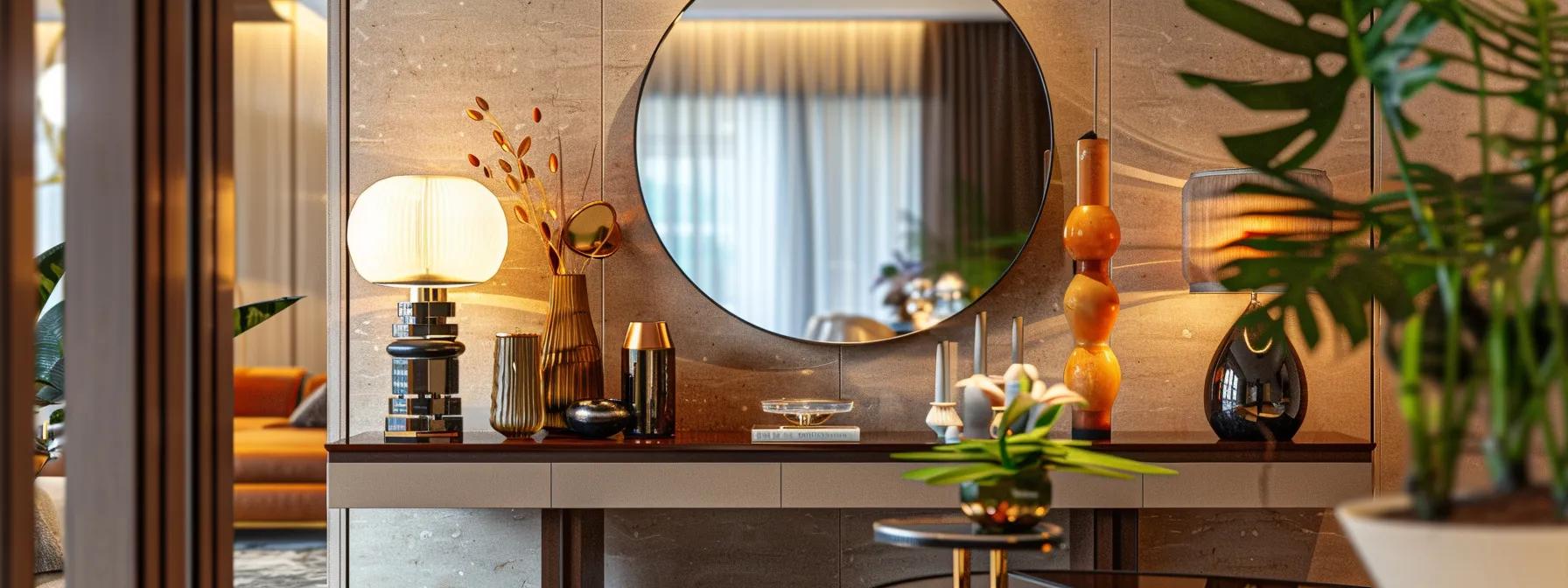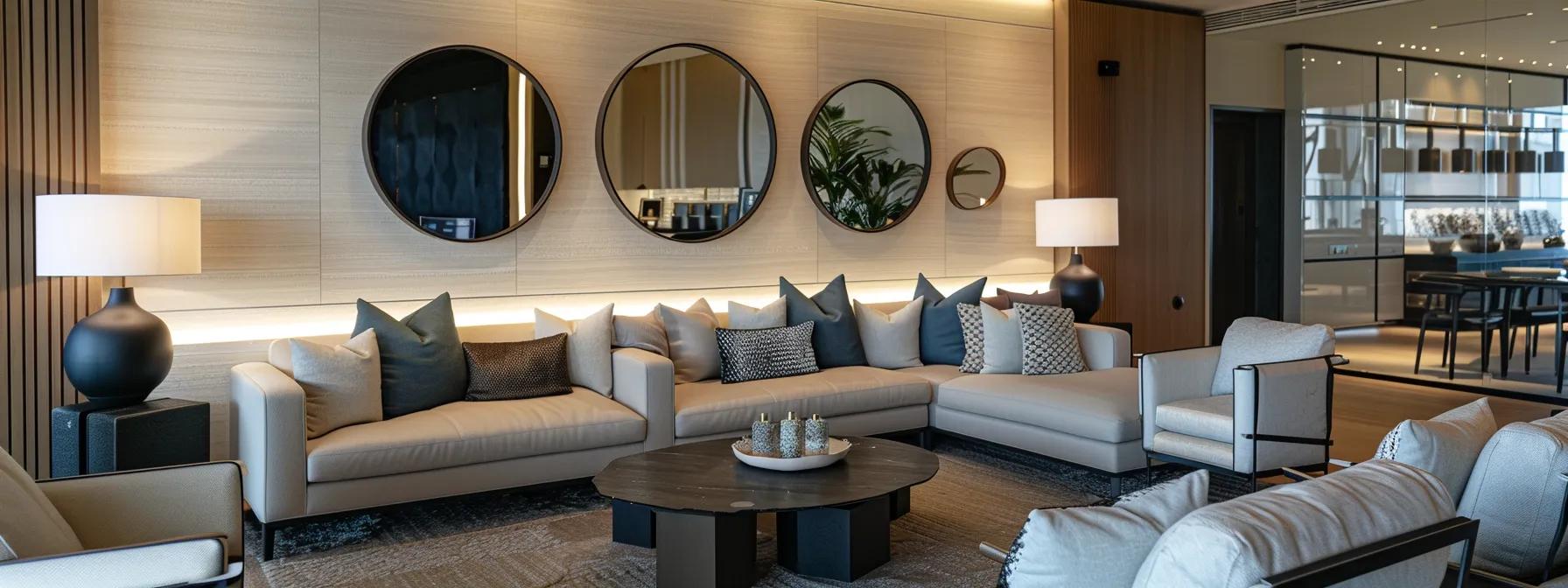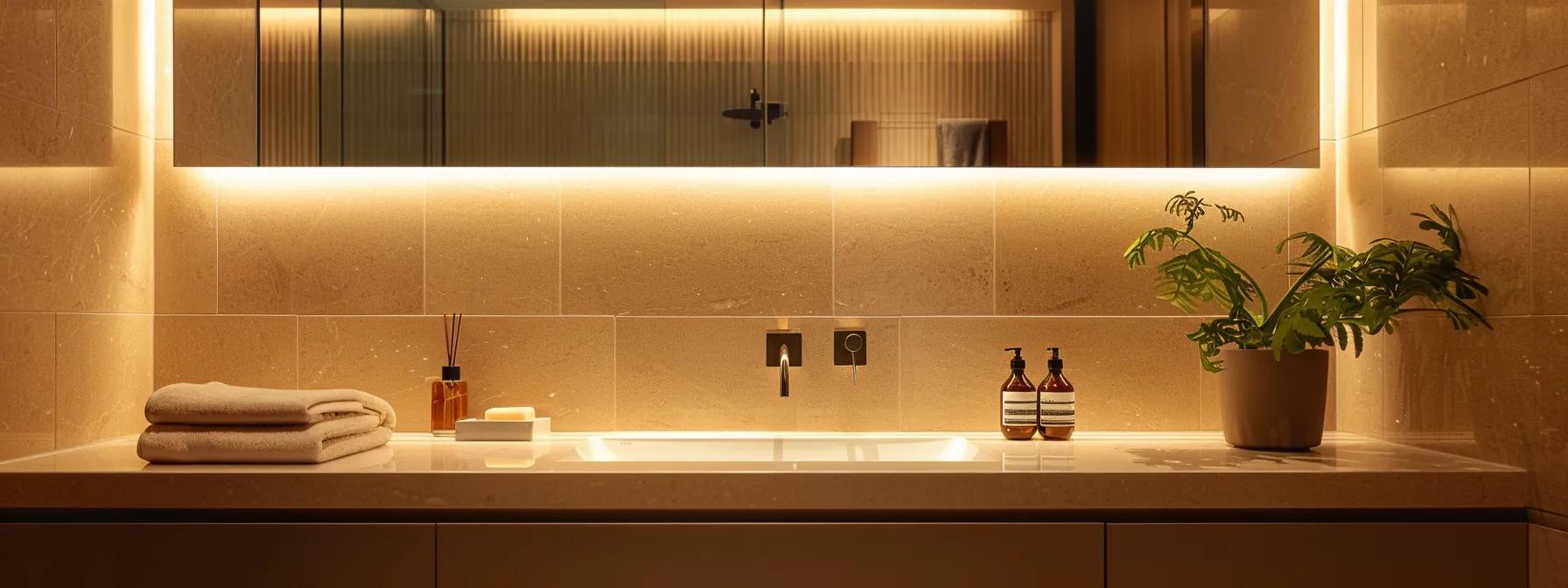How to Choose the Perfect Mirror: Ultimate Mirror Buying Guide on Dimensions, Styles & Materials
Choosing the perfect mirror for a space involves more than selecting a decorative accessory—it is about understanding the interplay between design, functionality, and material qualities that enhance a room’s aesthetic. Whether you are a homeowner or an interior designer, the right mirror adds depth, light, and character while complementing furniture and architectural features. This guide, developed by a certified Mirror & Glass Consultant at Berwyn Glass, offers a comprehensive approach to choosing glass irrors for both custom residential and commercial properties in the Greater Philadelphia area.
Throughout this article, readers will gain clarity on popular mirror styles and optimal placement, learn how to measure for mirrors in various rooms, and explore key materials that influence mirror durability and style. Detailed explanations, practical examples, and actionable recommendations support informed mirror selections that boost room dynamics and interior design coherence.
Key Takeaways:
- Pick a style that serves the room’s vibe and purpose. Round = soft focal point; rectangular = clean, symmetrical lines; oval/arched = elegant curves; full-length & vanity = practical grooming and space-stretching.
- Size it right. Aim for ~75 % of the vanity width in bathrooms, eye-level centering (≈ 60–65 in/152–165 cm from the floor), and full-length pieces in bedrooms or closets to amplify light and depth.
- Mind the materials. Glass offers top clarity; metal brings modern durability; wood adds warmth; acrylic is lightweight and shatter-resistant. Match frame or frameless options to the décor.
- Don’t forget lighting & tech. LED-backlit or smart mirrors give shadow-free illumination, energy savings, and extra features like touch controls.
- Install & maintain properly. Use the right wall anchors, keep everything level, clean with non-abrasive products, and add anti-fog or UV coatings where needed.
- Trend watch. Sustainable reclaimed frames and gadget-friendly smart mirrors are on the rise—good for the planet and user convenience.
What Are the Most Popular Mirror Styles and How Do They Fit Your Space?
Mirror styles are defined by their shape, design, and intended use, each delivering distinct aesthetic and functional benefits to a room. Whether round, rectangular, oval, arched, full-length, or vanity, a mirror’s style greatly influences a space’s ambiance and perception. It can convey modernity, traditional elegance, or rustic charm, transforming residential and commercial interiors alike.
What Defines Round Mirrors and Where Are They Best Used?
Round mirrors feature a smooth, circular shape without corners, softening any area while creating an organic, balanced look. Due to their subtle focal point, they are ideal for bathrooms, entryways, and living rooms, complementing both contemporary and eclectic decor. Functionally, round mirrors reflect light evenly to enhance depth, especially when positioned opposite windows or in darker corners, making them popular as statement pieces that blend form with function.
How Do Rectangular Mirrors Enhance Different Rooms?
Rectangular mirrors offer a classic, linear design and a clean, structured look suitable for living rooms, bedrooms, or offices where symmetry is important. Their straight lines highlight architectural features like fireplaces or artwork. They maximize reflective surface area, making them ideal for smaller spaces or as full-wall installations in dining rooms and hallways. Their versatile design allows them to coordinate with cabinetry and other decor elements, ensuring both decorative appeal and ample light reflection.
What Are the Benefits of Oval and Arched Mirrors?
Oval and arched mirrors combine the softness of curves with modern sophistication. Oval mirrors, with their stretched, rounded shape, add dynamic motion to a room and are effective for balancing sharp furnishings. Arched mirrors, characterized by a curved top edge, lend a classical appeal and evoke tradition. Both styles enhance light distribution by providing wider views, soften room dynamics, and serve as bridges between contrasting design elements.
Why Choose Full-Length and Vanity Mirrors for Your Home?
Full-length and vanity mirrors are essential for grooming and for making a room appear larger. Full-length mirrors, often installed on an entire wall or in walk-in closets, provide a comprehensive view and enhance room dimensions by emphasizing vertical lines. Vanity mirrors, typically smaller and intricately designed, are positioned near sinks or makeup tables for optimal lighting during grooming. Both mirror types are available in various decorative frames, sometimes with LED lighting or beveled edges, making them functional focal points that seamlessly integrate with a room’s decor.
How Do You Measure Mirror Dimensions for Different Rooms?

Accurate mirror measurement is critical to ensure that a mirror fits its designated space without overwhelming or undercutting the room’s layout. Measurement involves understanding available wall space, identifying focal points, and accounting for practical uses such as reflection and maintenance. Correct dimensions ensure that the mirror functions as an effective design element, enhancing both light and perceived space.
What Is the Step-by-Step Process to Measure for a Mirror?
- Clear the wall of obstructions.
- Measure the width and height using a tape measure.
- Determine the optimal mirror height by considering average eye level (typically between 60 and 65 inches from the floor) and the best reflection point.
- Subtract any needed clearance for mounting borders or frames.
- Sketch a simple layout to visualize placement.
- Verify measurements against available mirror options to avoid installation issues.
This systematic approach prevents common challenges and ensures that the mirror enhances both the room’s aesthetic and functionality.
What Mirror Sizes Work Best for Bathrooms and Vanities?
In bathrooms and vanity areas, mirror size should be proportionate to the vanity and overall room scale. A useful rule of thumb is to choose a mirror that spans roughly 75% of the vanity’s width, ensuring balance and practicality. Height should be sufficient to offer a complete view of the face and upper torso. In smaller bathrooms, a slightly smaller mirror prevents overpowering the space. If you’re unsure where to start, our guide on how to choose bathroom mirror covers size, placement, and lighting tips to ensure both function and style are optimized.
How to Select Mirror Dimensions for Bedrooms and Entryways?
In bedrooms, a full-length mirror can enhance natural light and create a sense of spaciousness, often complementing furniture arrangements and providing views from multiple angles. In entryways, larger mirrors serve as welcoming elements that expand narrow spaces and brighten ambient light. A mirror with a decorative frame can also enhance an entryway’s character while providing the practical benefit of a final appearance check.
What Are the Key Mirror Materials and How Do They Affect Style and Durability?
The material of a mirror affects its aesthetic appeal, durability, and maintenance. Common materials include glass, metal, wood, and acrylic—each adding unique qualities such as warmth, reflectivity, and endurance. Understanding these differences helps in selecting a mirror that complements your design style and withstands daily use.
What Are the Advantages and Care Tips for Glass Mirrors?
Glass mirrors are favored for their high reflectivity and visual clarity. They come in a range of finishes from ultra-clear shop-quality options to those with decorative beveled edges that add sophistication. For longevity, glass mirrors should be cleaned regularly with a soft cloth and a glass-friendly cleaner, avoiding abrasive materials that can scratch the surface. In high-humidity areas like bathrooms, anti-fog treatments or built-in defogging technologies are recommended, and UV-resistant coatings can help prevent discoloration.
How Do Metal Mirrors Differ in Style and Maintenance?
Metal mirrors, often featuring finishes such as brushed steel, chrome, or antiqued brass, bring a modern and industrial aesthetic. They are durable and resistant to impacts, making them suitable for contemporary or minimalist interiors. However, metal mirrors need careful maintenance to prevent corrosion—cleaning with a microfiber cloth and mild, metal-safe cleaners is advisable to preserve their sleek appearance.
What Should You Know About Wood and Acrylic Mirror Materials?
Wood-framed mirrors combine natural beauty with craftsmanship, adding warmth and charm to rustic or country-style interiors. Hardwood frames, prized for their durability, require periodic dusting and refinishing to maintain their appearance. Acrylic mirrors, on the other hand, are lightweight and shatter-resistant, making them a good choice for high-traffic areas or children’s spaces. Although they may not match the pristine clarity of glass, they offer versatility and ease of handling. Both wood and acrylic options can be customized to reflect individual interior styles while meeting practical durability requirements.
What Types of Mirror Frames Are Available and How Do They Impact Design?

Mirror frames are both structural and decorative, influencing how a mirror integrates with its surroundings. Options include framed, frameless, beveled, and those with integrated LED or backlit designs. Each type affects room ambiance, maintenance, and overall style integration.
What Are the Pros and Cons of Framed Mirrors?
Framed mirrors offer dual benefits by providing a reflective surface along with decorative flair. Available in materials like wood, metal, or resin, they can match decor elements throughout a room while adding structural support to protect mirror edges. The drawback is that an overly ornate frame might detract from the mirror’s reflective purpose or complicate cleaning, as dust can gather in intricate details.
How Do Frameless and Beveled Mirrors Change the Look of a Room?
Frameless mirrors provide an uninterrupted reflective surface that makes a room appear larger and more cohesive, ideal for modern and minimalist designs. Beveled mirrors, with subtly graded edges, add depth and ornamentation without the bulk of traditional frames. Both styles foster an open and airy feel, while accentuating a room’s design through simplicity or refined detailing.
How Does Lighting, Including LED and Backlit Mirrors, Enhance Mirror Functionality?
Integrated lighting, such as LED and backlit systems, enhances mirror functionality by providing even, diffused illumination that reduces shadows—critical for grooming in bathrooms and dressing areas. These mirrors also add a modern technological edge and energy efficiency, with adjustable color temperatures that can alter the ambiance of a room, be it in a cozy bedroom or a professional dressing area.
How to Choose the Right Mirror for Specific Rooms in Your Home?
Selecting the right mirror involves matching its style, size, and material to the room’s practical needs and design theme. Different spaces demand mirrors that efficiently reflect light, enlarge the perceived space, and complement the existing décor.
What Mirror Styles and Sizes Are Ideal for Bathrooms?
For bathrooms, choosing a mirror that balances functionality with style is key. A well-proportioned vanity mirror or a frameless mirror with integrated LED lighting works best. The mirror should generally measure about 75% of the vanity width, and feature materials that resist humidity—such as glass with anti-fog treatment or corrosion-resistant frames.
Which Mirrors Work Best in Bedrooms and Living Rooms?
In bedrooms, full-length or accent mirrors not only serve for dressing but also amplify natural light to create an illusion of spaciousness. In living rooms, oversized or statement mirrors serve as focal points, reflecting art, furniture, and daylight to boost interior dynamics. The style of the mirror should complement the room’s overall decor, whether modern, traditional, or eclectic.
How to Select Entryway Mirrors for Style and Practicality?
Entryway mirrors should be sized to match the scale of the space while enhancing its openness. They work best when chosen to complement an entryway’s design theme—whether via a frameless, beveled, or subtly framed option—and are ideally placed to both reflect light and invite guests into the home.
What Are the Best Practices for Hanging and Maintaining Your Mirror?

Proper mirror installation and regular maintenance are crucial for safety, functionality, and aesthetic longevity. Secure mounting and proper cleaning routines ensure that the mirror continues to reflect its surroundings flawlessly.
How Do You Properly Hang Different Types of Mirrors?
Begin by assessing the wall’s structure and selecting appropriate mounting hardware—for example, heavy-duty wall anchors or bracket systems for large, frameless mirrors. Measure the mirror’s placement relative to furniture and use laser levels if possible to ensure the installation is balanced and level. This method minimizes potential hazards and ensures the mirror remains securely in place.
What Are Effective Cleaning Tips for Various Mirror Materials?
Use a soft cloth and cleaning products specifically formulated for the mirror’s surface—glass cleaners, metal-safe agents, or wood-polishing products—to avoid streaks and damage. Regular dusting and scheduled cleaning, particularly in high-humidity areas with anti-fog treatments, help maintain both the mirror’s clarity and its frame’s appearance.
What Are the Latest Trends and Innovations in Mirror Design?
Mirror design evolves with trends emphasizing technology integration, sustainability, and innovative aesthetics. Advances include smart mirrors with digital displays and eco-friendly options crafted from recycled or reclaimed materials that offer both style and functionality.
How Are Smart Mirrors and Eco-Friendly Materials Changing the Market?
Smart mirrors now feature integrated touchscreens, facial recognition, and environmental displays that adjust lighting based on ambient conditions, enhancing both user convenience and grooming accuracy. Eco-friendly mirrors, made from recycled glass or reclaimed wood, promote sustainability while delivering durability and modern design appeal.
What Interior Design Trends Influence Mirror Styles and Sizes?
Current interior design trends such as minimalism, maximalism, industrial chic, and mid-century modern heavily influence mirror selection. Minimalist spaces favor frameless designs with clean lines, while maximalist interiors might opt for layered or ornate mirrors. Industrial chic and mid-century modern styles incorporate metal or natural wood elements, ensuring that mirror choices support a cohesive, stylish narrative.
Frequently Asked Questions
Q: What factors should I consider when choosing a mirror for my space?
A: Consider the mirror’s style, shape, and size relative to the room’s dimensions, along with its material and frame type. These factors affect both the mirror’s aesthetic appeal and its ability to reflect light and expand visual space.
Q: How do I measure the ideal mirror size for different rooms?
A: Measure the available wall space, identify focal points, and ensure the mirror’s dimensions complement the room without overwhelming it. A common guideline is to select a mirror that covers about 75% of a vanity’s width in bathrooms.
Q: What are the benefits of using glass mirrors over acrylic or metal mirrors?
A: Glass mirrors provide superior reflectivity and clarity, offering a timeless look and durability when properly maintained. Acrylic mirrors are lightweight and shatter-resistant, while metal mirrors add an industrial feel and robustness.
Q: How can smart mirrors enhance the functionality of my bathroom or dressing room?
A: Smart mirrors combine digital features—such as touchscreens and adjustable LED lighting—with traditional mirror functions to offer improved grooming illumination, real-time updates, and a modern design aesthetic.
Q: Are eco-friendly mirrors cost-effective compared to traditional options?
A: Although eco-friendly mirrors may have a higher initial cost due to sustainable materials, their durability and reduced need for replacement make them cost-effective in the long run, while promoting environmental responsibility.
Q: What maintenance practices help prolong the life of a mirror?
A: Regular cleaning with a microfiber cloth and non-abrasive cleaners, along with anti-fog treatments in high-humidity areas, helps prevent dust, fingerprints, and moisture buildup, extending the mirror’s lifespan.
Q: How do different mirror frame options influence interior design?
A: Framed mirrors add decorative flair and can serve as statement pieces, while frameless mirrors provide a minimalist, expansive look. Integrated framing elements like beveled edges or built-in lighting further enhance both the functional and aesthetic qualities of a mirror.
Final Thoughts
The perfect mirror seamlessly blends design, functionality, and durability while complementing a space’s overall aesthetic. At Berwyn Glass, we believe that choosing the right mirror—from the style and material to the specific size and placement—can transform a room by enhancing natural light, expanding visual space, and adding a sophisticated touch. By carefully evaluating each element of design and practical use, homeowners and designers can create environments that are as beautiful as they are functional. Ultimately, selecting the right mirror is an investment in both style and long-term value, ensuring every room reflects your best design vision.

